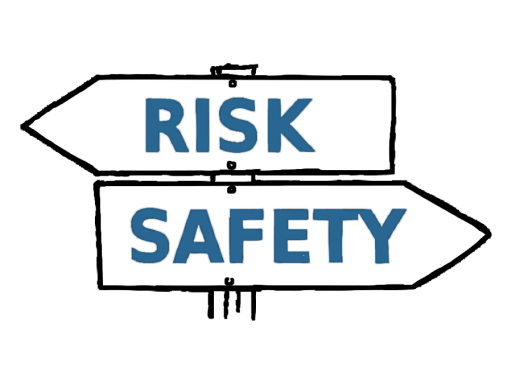How to Mitigate HSE Risks with Comprehensive Property Surveys
Commercial properties inherently come with a set of potential risks and hazards. Failing to address these risks can lead to severe consequences for both your business and for anyone occupying the property, from legal penalties and financial losses to damage to the company’s reputation.
As a business owner, comprehensive risk management should be a regular occurrence in order for you to take ownership of the premises and ensure that any health and safety risks are being dealt with accordingly. Property surveys can be an effective tool in helping companies minimise HSE risks and take proactive steps when necessary to remove hazards before they become problematic.
Types of Property Surveys for HSE Risk Mitigation
Property surveys are diverse and can, and should, be tailored to address various aspects of health, safety, and environmental concerns within a commercial property. These are some of the most common HSE professionals should be familiar with:
Structural Surveys
Building surveys are designed to identify potential hazards related to the structure and the operational aspects of a building, such as the materials used for construction, current condition, and problems with core features such as the roof or foundations. Construction regulations are complex and strict when it comes to commercial properties, so having a detailed examination of the property’s condition and any defects is a key component of carrying out your due diligence when it comes to the safety of the premises.
Legionella Risk Assessments
COSHH 2002 also mandates that organisations manage the risk of Legionella outbreaks within their facilities. The methods for controlling Legionella vary depending on several factors such as the type of building, its occupancy, and the design of water heating and storage systems. Having a Legionella Risk Assessment carried out is important to identify any potential hazards and outline the necessary control measures to make sure the building’s water systems comply with safety standards.
Noise Surveys
Workplace noise is governed by specific regulations introduced in 2005, which restrict the exposure of individuals to certain decibel levels throughout a workweek or during any given day. Noise levels can be evaluated via a noise survey, which uses both personal dosimetry equipment and static meters to measure exposure to noise. If the levels are found to exceed legal limits, control measures need to be implemented to reduce exposure and ensure compliance with the regulations.
Asbestos Surveys
Asbestos is a toxic material that can be found in older buildings but has since been banned as a construction material due to its risk to our health. Asbestos surveys are essential for identifying and assessing the presence of asbestos-containing materials (ACMs) within a building and developing an asbestos management plan.
Key Areas to Focus on During Property Surveys
When conducting property surveys, there are certain key areas that require special attention to ensure a thorough assessment of potential HSE risks. Structural integrity and stability should always be paramount, for example. Assessing the quality of building materials, construction practices, and ongoing maintenance required can reveal vulnerabilities that might compromise the safety of the structure, resulting in serious injuries.
Fire safety and emergency preparedness are also critical areas of focus. Surveys should evaluate the adequacy of fire detection, alarm, and suppression systems, as well as the accessibility of emergency exits and clarity of evacuation routes. There may also be environmental hazards, such as the presence of toxic materials or harmful chemicals, that need to be identified and managed appropriately.
Finally, occupant safety and accessibility need to be a main focus for any commercial facility and property surveys will inform this. Ensuring that the property is safe, accessible, and ‘Part M compliant’ for all occupants, including those with disabilities and mobility issues, involves reviewing signage, lighting, and pathways to promote a safe and inclusive environment.
Actionable Steps to Mitigate HSE Risks
Mitigating HSE risks begins with the regular and comprehensive surveying of the property, but there are steps that follow that business owners need to be aware of. First, scheduling regular surveys should be a priority—no commercial survey should be a one-and-done deal. Establishing a schedule for routine inspections is crucial for staying ahead of potential issues.
Once the surveys have been conducted, the findings need to be translated into actionable safety measures for the business. There may be urgent findings that need to be prioritized immediately to prevent a serious accident or hazard, while others can possibly be addressed later on or over a staggered period of time.
Implementing the recommendations from surveys is just part of the process. Business owners then need to develop and update their safety protocols based on the findings in order to maintain a safe working environment. These protocols should be regularly reviewed and adjusted to reflect any changes in the property or updates in safety regulations and guidelines.
Training and educating staff is another critical step in mitigating HSE risks, and survey findings can help guide this step. Staff should be well-versed in safety procedures and emergency response protocols already, and there should be a continuous effort to promote a culture of safety awareness among all occupants. If there are findings from the survey that require new equipment to be put in place or changes to the premises or operations, their training may need to be amended accordingly.
Comprehensive property surveys are indispensable tools in the identification and mitigation of HSE risks for business owners and commercial property owners. They provide property managers with a way of systematically assessing the various aspects of a building’s structure, environment, and operational safety, to provide a clear roadmap for addressing any potential hazards.
When it comes to investing in HSE prevention, surveys are often overlooked, but the long-term benefits of them are many. From providing a safer environment for occupants and visitors, to ensuring compliance with legal standards and protection against potential liabilities, surveys can be a vital component of any risk assessment strategy.



